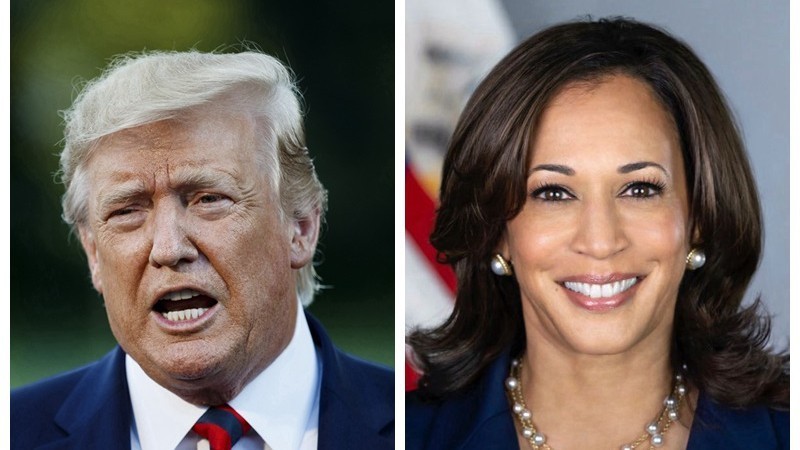The “two-horse race” between the Democratic and Republican presidential candidates is expected to contain surprising elements and remain intense until the final moment.
The developments in the final stretch have reflected the dramatic and unpredictable nature of this year’s US presidential election. Up until the zero hour, the two candidates, Democrat Kamala Harris and Republican Donald Trump, are still locked in a very tight race.
The poll results have been constantly shifting direction. According to a poll released by The Hill and Decision Desk HQ on November 1, neither candidate held a margin larger than 2% in any of the seven battleground states: Michigan, Nevada, Pennsylvania, Wisconsin, Arizona, Georgia and North Carolina.
The aggregate polling from The Hill/Decision Desk HQ shows Harris leading Trump by a narrow margin of 48.2% to 48.1%. However, poll results always deviate somewhat from the final election results. Moreover, many voters only make their decision when they reach the ballot box, and unexpected events could occur in the final moments, so it is impossible to predict what scenario will unfold on November 5.
Vice President Kamala Harris and former President Donald Trump have made different policy commitments on important US issues such as the economy, immigration and foreign policy. The economy has always been considered the most important factor for most voters.
Kamala Harris pledges to cut taxes for working and middle-class citizens, provide credit support of up to 25,000 USD for first-time home buyers with mortgages, and extend the 35 USD price cap on diabetes medication and the 2,000 USD cap on medical payments.
Meanwhile, former President Donald Trump has made commitments about addressing inflation and boosting energy output. The Republican candidate has declared he will reverse President Joe Biden’s restrictions on fossil fuel production and use all necessary tools to bring down inflation in his first year in office.
A few days before the election, the US economy received several positive signals. Inflation is forecast to continue cooling from its pandemic-era peak, private sector job numbers have exceeded estimates, and GDP is growing. This also means that the next US president may inherit an economy that is on a positive development track.
However, according to experts, this also presents a significant challenge for the next president. Justin Wolfers, a professor of public policy and economics at the University of Michigan, assesses that the next president will need to maintain a delicate balance: executing their pledges to overhaul an economy that voters appear to loathe without derailing the current trajectory of real economic growth.
Prior to the election, officials in the most competitive battleground states have had to rapidly prepare for various post-election disruption scenarios, including misinformation, conspiracy theories, threats, and even the risk of violence.
In Philadelphia, Detroit and Atlanta — three locations where former President Donald Trump has frequently alleged election fraud — officials have taken measures to prevent chaos, including surrounding vote counting facilities with razor-wire fencing and protecting election offices with bulletproof glass.
With polls showing that the two presidential candidates are in a tight race, opportunities evenly split between both sides, and small changes could significantly impact the race’s outcome. This is not just a race between two candidates with many different viewpoints, but also a competition to determine America’s future development direction.
















